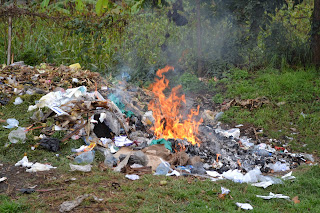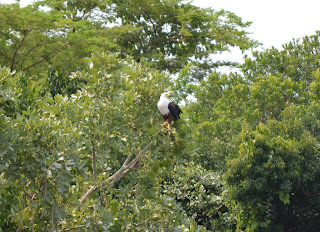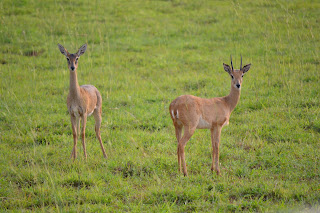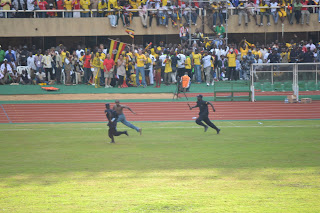First, someone commented on my last post that they wanted to know what I answered to the question, "What does it take to succeed in America?" To tell you the truth, I don't really know. I was caught a bit off guard by the question . I think I said something about working hard, networking, and becoming educated . . .
On Tuesday, I went to the headquarters of TASO, The AIDS Support Organization, which is located at Mulago Hospital. I was struck by the number of people waiting seek medical attention. It appeared as if the waiting room extended outside of the several story building. Later, I learned that the clinic was downstairs and the headquarters for the organization, which has 11 clinics in Uganda, upstairs. I met with a lovely lady. Unfortunately, it seems that rely more on older volunteers so it is going to be more difficult to find volunteer placements within their structure for EAC children; however, I am excited to report that she connected me with the head of the clinic who is allowing me to go to the rehearsal of a drama troupe that TASO uses to educate about HIV/AIDS. This group consists of people who have the disease. I hope to attend their rehearsal on Monday. Through this, I might be able to find ways for EAC children to volunteer.
I returned to the hospital Wednesday to visit the clinic that treats malnourished children. This was a long awaited visit as I was not permitted to enter when my original appointment was scheduled because the Ugandan president was coming the same day. Like many children's hospitals in the US, this clinic was painted to appeal to children. There were animals painted all over the walls. I think the artist was inspired by the Jungle Book because he animals reminded me of several characters. Edith, the EAC social worker that I went with, was amazed at the decor. She explained to me how few hospitals in Uganda, even those for children, look like that.
The hospital is divided into several sections. The first building is for new patients that are in critical care. Dr. Anne, my tour guide and host, explained that the majority of the children are brought in by their guardians. I wish I had asked what is needed to keep guardians from waiting until their children are in a life and death predicaments to seek aid. The person I met with about volunteer opportunities told me that many children are abandoned at the hospital by their guardians. Then, the hospital has to work to find them placements in orphanages.
Once a child moves out of critical care, they are sent to another ward to recuperate. There is a playground and different toys for the children to play with. It is here where there may be opportunities for EAC children to volunteer to play with the children. Even more, on Fridays, there is a music and dance hour, which I can imagine EAC children participating in. I am going to go tomorrow with Nicholas to see it for myself. Being at this clinic made me think about how many amazing people there are in the world. The staff at the hospital was so dedicated to helping the children. I could see it in their faces, which gave off an air of intensity and happiness.
Before I conclude, I want to tell you about my new Boda Boda driver, a hilarious character. He does not stop talking the whole ride! He has yet to realize that hear very little of what he says because of my helmet; however, I have caught several classic tidbits. To begin, he wants to be a singer and hopes to be in the recording studio at the end of the year. His inspiration is no other than Justin Bieber. He just thinks that he is the most talented and prolific artist. He sang me a bit of "baby baby oh" (I don't know the name of the song). Even more, he is convinced that Will and I are brothers and talks non-stop about his dream of living in America. He pictures himself in New York City. I always struggle with what to say when someone tells me something like that because I know the chances of them actually coming to America is so low. The best thing about this driver is that he understands my desire to go slow and be safe when on a Boda.
Finally, I realize that I keep referring to Empower African Children (EAC) and have not really explained what they do. Check out their website http://empowerafricanchildren.org/. Tomorrow is going to be a busy day because I have 3 appointments. I look forward to reporting back to you about how they go.
- Feldman
















































